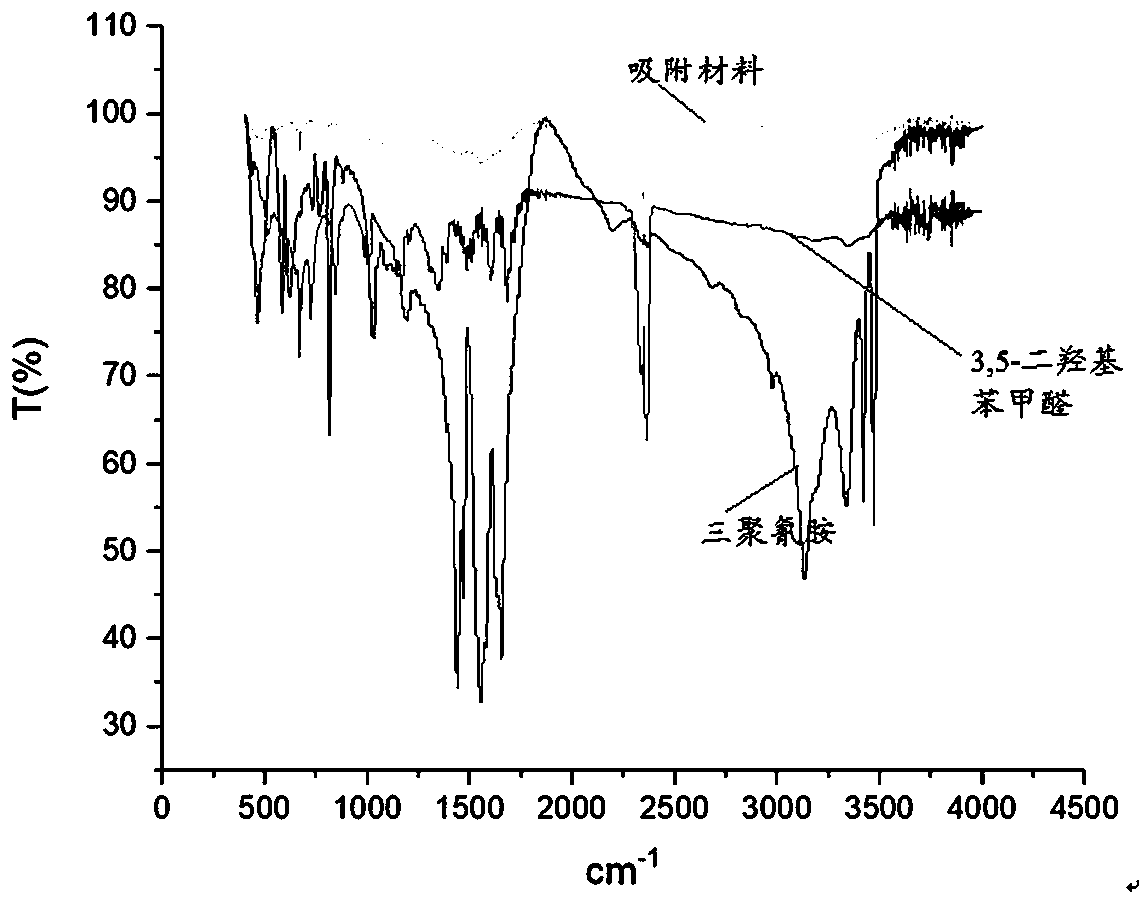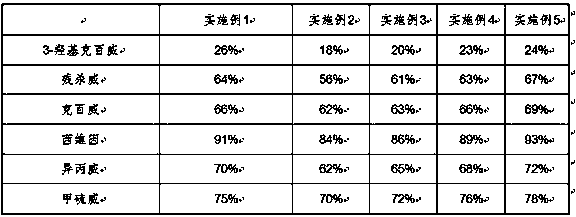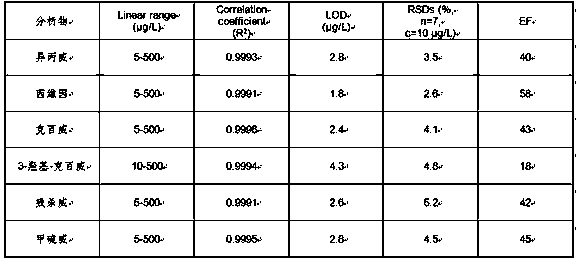Adsorbing material, and method for detecting content of carbamate pesticide residues in tobacco leaves
A technology of carbamates and adsorption materials, which is applied in the directions of analysis materials, measuring devices, material separation, etc., can solve the problems of difficult quantitative detection and unsatisfactory qualitative analysis effect.
- Summary
- Abstract
- Description
- Claims
- Application Information
AI Technical Summary
Problems solved by technology
Method used
Image
Examples
Embodiment 1
[0038]Synthesis of Adsorbent Materials. Under nitrogen atmosphere, 0.126 g melamine (molar mass 126.12), 0.245 g 3,5-dihydroxybenzaldehyde (molar mass 138.12), DMSO (25 ml) were added to the flask, and the mixed solution was refluxed at 180 °C for 72 h , after cooling, washed with a mixture of DMF (40 ml), methanol (40 ml) and THF (40 ml), dried at 60 °C, and grinded to obtain an adsorbent.
[0039] Detection of carbamate pesticide residues. Weigh 0.3 g of tobacco leaves into a 4 mL EP tube, add 2 mL of 45 vol% methanol-water solution, ultrasonically extract for 5 min, take 1 mL of supernatant, and dilute to 30 mL with 45% methanol-water solution for use. Put 30 mg of SNW material into 30 mL of sample solution (no pH adjustment), extract at 600 rpm for 50 min, centrifuge to remove the sample solution, then add 0.5 mL of acetonitrile for ultrasonic desorption for 15 min, centrifuge, and take 30 µL for injection to HPLC-UV analysis.
Embodiment 2
[0041] Synthesis of Adsorbent Materials. Under nitrogen atmosphere, 0.252g melamine (molar mass 126.12), 0.138 g 3,5-dihydroxybenzaldehyde (molar mass 138.12), DMSO (25 ml) were added to the flask, and the mixed solution was refluxed at 180 °C for 72 h , after cooling, washed with a mixture of DMF (40 ml), methanol (40 ml) and THF (40 ml), dried at 60 °C, and grinded to obtain an adsorbent. The detection of carbamate pesticide residues is the same as in Example 1.
Embodiment 3
[0043] Synthesis of Adsorbent Materials. Under nitrogen atmosphere, 0.595g 2,4,6-triaminobenzene-1,3,5-tricarboxylic acid (molar mass 297.264), 0.138 g 3,4-dihydroxybenzaldehyde (molar mass 138.12), tetrachloro Carbon dioxide (25 ml) was added to the flask, and the mixed solution was refluxed at 180 °C for 72 h, cooled and washed with a mixed solution consisting of DMF (40 ml), methanol (40 ml), and THF (40 ml). , and then dried at 60 °C, and the adsorbent material was obtained after grinding. The detection of carbamate pesticide residues is the same as in Example 1.
PUM
 Login to View More
Login to View More Abstract
Description
Claims
Application Information
 Login to View More
Login to View More - R&D Engineer
- R&D Manager
- IP Professional
- Industry Leading Data Capabilities
- Powerful AI technology
- Patent DNA Extraction
Browse by: Latest US Patents, China's latest patents, Technical Efficacy Thesaurus, Application Domain, Technology Topic, Popular Technical Reports.
© 2024 PatSnap. All rights reserved.Legal|Privacy policy|Modern Slavery Act Transparency Statement|Sitemap|About US| Contact US: help@patsnap.com










